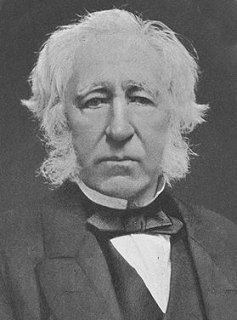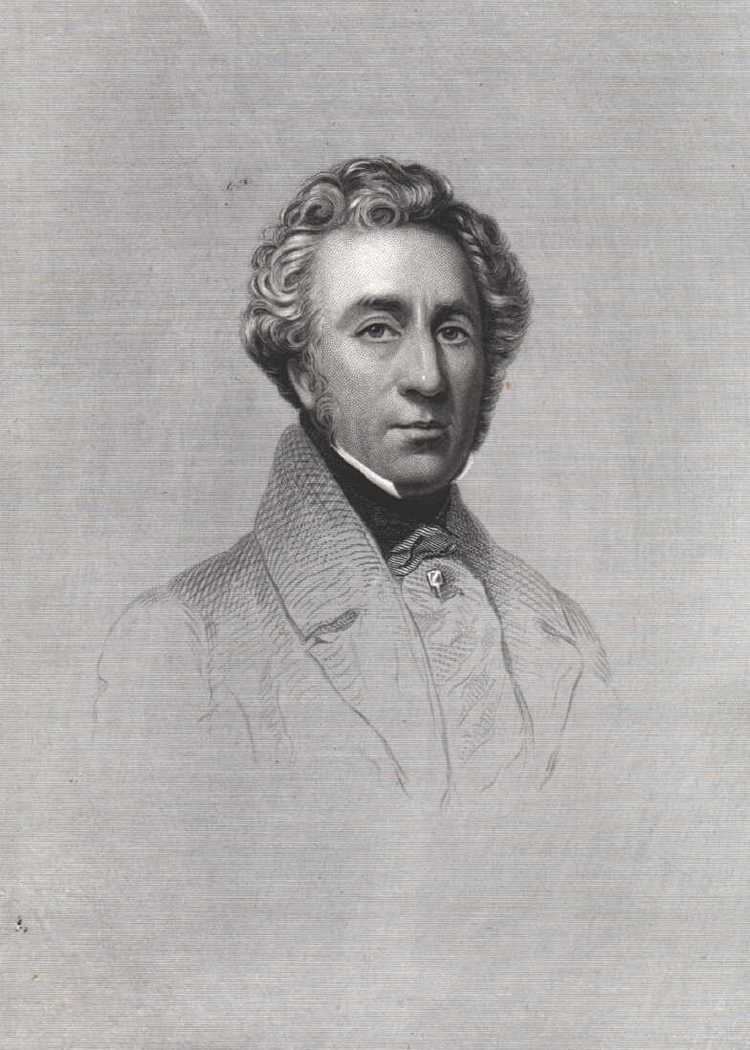Name Robert Napier Role Engineer | Died June 23, 1876 | |
 | ||
Similar People William Beard - 1st Baron, James Beaumont Neilson, Napoleon III, Mary Somerville, Eugenie de Montijo | ||
Robert Napier (21 June 1791 – 23 June 1876) was a Scottish marine engineer known for his contributions to Clyde Shipbuilding.
Contents
- Early life
- Robert Napier and Sons
- Marine Engines and Shipbuilding
- Honours and awards
- Art patronage
- Death
- Literature
- References

Early life
Robert Napier was born in Dumbarton at the height of the Industrial Revolution, to James and Jean Napier. James was of a line of esteemed bell-wrights, blacksmiths, and engineers, with a brother (also named Robert) who served as blacksmith for the Duke of Argyll at Inveraray Castle.
Robert was educated at the burgh school where he took an interest in drawing, which reflected in his later life in an interest in painting and fine arts. Against his father's hopes that he would become a minister in the Church of Scotland, he developed an interest in the family business. At age sixteen, he was confronted by a Royal Navy press gang who intended to conscript him into service during the Napoleonic Wars. Instead of allowing his son to be conscripted, James Napier signed a contract of formal indenture with his son, making him immune to conscription.
Robert's apprenticeship with his father lasted for five years, after which time he moved to Edinburgh and worked for Robert Stevenson, builder of the Bell Rock Lighthouse.
Robert Napier and Sons
Robert Napier set up his own business in 1815. In 1841 he took his sons James and John into partnership and their firm's name became Robert Napier and Sons.
Marine Engines and Shipbuilding
In 1823 he won a contract to build a steam engine for the paddle steamer Leven. The engine was so good that it was later fitted to another ship, the paddle steamer Queen of Beauty. The Leven engine – his first engine – now rests at the Denny Ship Model Experiment Tank branch of the Scottish Maritime Museum in Dumbarton.
In 1827, Robert Napier had the unique distinction of having built the engines of both of the two fastest ships to compete in the Northern Yacht Club's August Regatta. These were the paddle steamers Clarence and Helensburgh. This distinction earned him a reputation as a shipbuilder, which furthered his career, as did also his co-operation on hull design with Thomas Assheton Smith: see C.Dawson, "Thomas Assheton Smith's Steam Yachts", The Mariner's Mirror, Vol.92, Issue 3, August 2006. In 1828 he established Glasgow's Vulcan Foundry.
Many of Scotland's most esteemed shipbuilders apprenticed under Robert Napier, including James and George Thomson, who founded the J & G Thomson shipyard (now known as John Brown & Company), and John Elder of the Fairfield Shipbuilding and Engineering Company.
Robert Napier continued building steamship engines, eventually expanding into steam engines for ocean-going vessels. In 1835 he procured a controversial contract with the East India Company to build an engine for their ship, the paddle steamer Berenice which, built by David Napier, (Robert's cousin) and using Robert's engine, proved faster than her sister ship, the paddle steamer Atalanta (built on the Thames) – beating her to India by 18 days on their maiden voyage.
In 1838, Robert Napier was contracted by the Admiralty to produce 280 NHP engines for two of their ships, the first class paddle steamer sloops Stromboli and Vesuvius but after that, orders ceased. When Napier had this queried in Parliament, the reply proved that Napier's engines were cheaper and more reliable than those built in the Admiralty's usual shipyards on the Thames. Thereafter, Robert Napier was the Admiralty's primary engine builder.
Robert Napier's largest success, however, came from his business deals with Samuel Cunard. Together with Cunard, James Donaldson, Sir George Burns, and David MacIver, he co-founded the British and North American Royal Mail Steam Packet Company. It seems that Napier could be considered responsible for the livery of the Cunard funnels, since the vermilion colour and black hoops were already used on earlier Napier-engined ships, as evidenced by the shipbuilder's model of P.S. "Menai" of 1830 in the Scottish Transport Museum in Glasgow. In 1841 he expanded his company to include an iron shipbuilding yard in Govan and the Parkhead Forge Steelworks, and in 1843 they produced their first ship, the Vanguard. He also procured a contract with the Royal Navy to produce vessels, notably the Jackal, the Lizard, and the Bloodhound, which became the first iron vessels in the Royal Navy. He also allowed naval officers in training to visit the shipyard to familiarise themselves with the new vessels. The Parkhead Forge was acquired by William Beardmore and Company in 1886. Napier's Shipyard in Govan was also later acquired by Beardmore's in 1900 before being sold on to Harland & Wolff in 1912, and before finally closing in 1962. The Parkhead Forge would eventually close in 1976.
Honours and awards
Art patronage
Napier never lost his early interest in art. He built his home in Shandon, by the Gareloch, to house his sizeable art collection, which included work by artists such as Henry Raeburn and Horatio McCulloch, as well as art by Dutch, French and Italian masters.
Death
In 1875 his wife of 57 years, Isabella, died. Shortly afterwards, Robert Napier fell seriously ill, and died the next year, in 1876. He is buried in the Parish Kirkyard, in Dumbarton.
